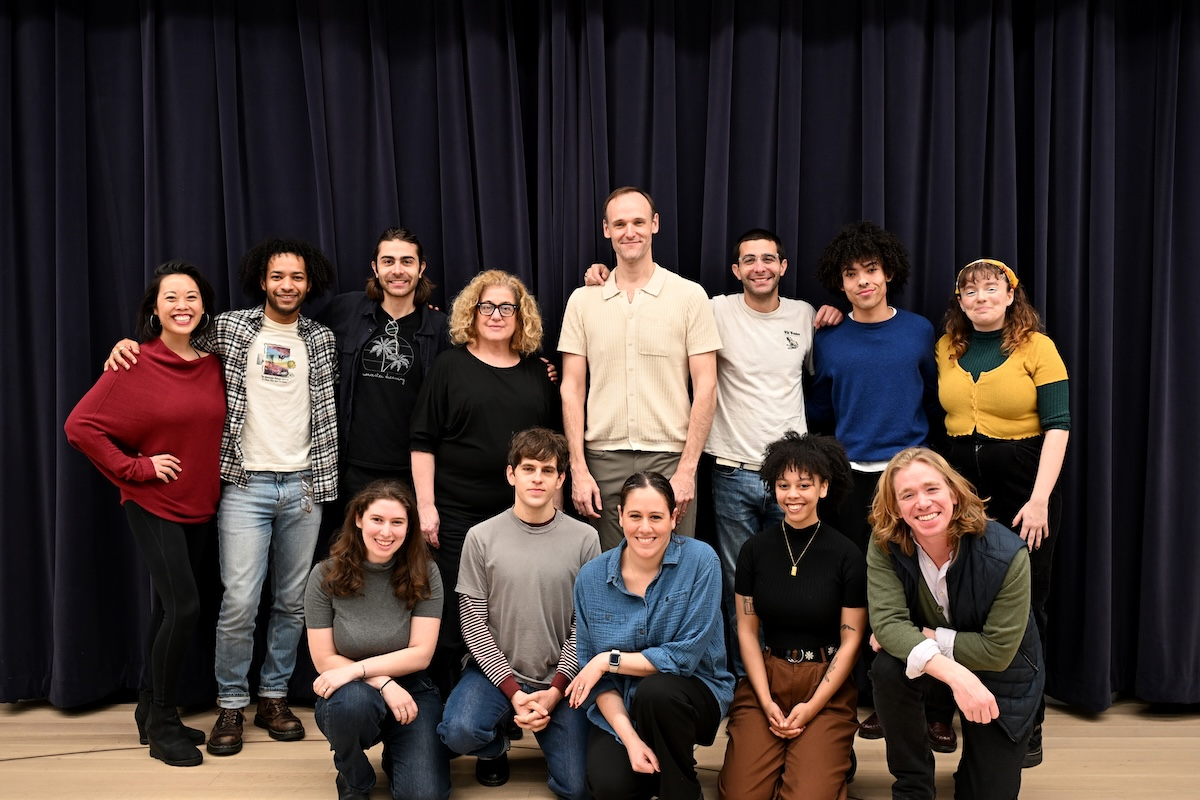Patricia Lockwood, a prominent voice in contemporary literature, urges us to recognize the internet as an integral part of real life. Renowned for her sharp wit and engaging storytelling, Lockwood’s exploration of digital themes in her works challenges traditional perceptions of narrative. During her recent Harvard talk, she discussed how her novel “No One Is Talking About This” captures the unsettling intersection of online personas and offline realities. In a world where the boundaries between the digital and the physical are increasingly blurred, Lockwood argues for the significance of dialogue in fiction as a means to authentically convey characters steeped in both realms. Her insights not only reflect her unique upbringing but also emphasize the cultural importance of internet writing in today’s literary landscape.
Patricia Lockwood stands at the crossroads of reality and the digital age, a theme that resonates deeply in modern literature. Her narratives, particularly those exploring life in the virtual sphere, highlight the complexities of identity shaped by online interactions. In discussions about novel writing, Lockwood emphasizes how captivating dialogue can encapsulate the essence of her characters, bridging their existence in both physical and virtual spaces. Furthermore, her engaging discussions shed light on the growing relevance of internet themes in literature, encouraging readers to interrogate their own perceptions. Ultimately, Lockwood’s work invites a broader conversation about the necessity of embracing the internet as a legitimate element of contemporary storytelling.
The Internet as an Extension of Real Life
Patricia Lockwood’s perspective that the internet is an undeniable part of real life challenges the traditional view that online interactions are superficial. In her acclaimed work, “No One Is Talking About This,” she explores the complexities of social media existence, emphasizing how it deeply intertwines with personal identity and reality. This notion disrupts the conventional dichotomy between online and offline, suggesting that our digital lives are genuine reflections of who we are. By questioning the dismissal of internet-related narratives in literature, Lockwood sparks a vital conversation about the relevance of these experiences in the modern storytelling landscape.
Lockwood’s contention that the discomfort surrounding the acceptance of the internet as real life reveals a societal reluctance to confront the implications of a dual existence is compelling. Many individuals feel that revealing their online personas unveils a vulnerability that is difficult to navigate. Lockwood invites readers and audiences to reconsider these boundaries, suggesting that understanding our online interactions is essential in making sense of contemporary human behavior and relationships.
Patricia Lockwood’s Unique Approach to Novel Writing
During her Harvard talk, Patricia Lockwood shared insights into her creative process and the vital role character dialogue plays in her writing. By focusing on the authentic speech patterns of her characters, she creates characters who feel real and relatable. This method highlights her belief in the importance of dialogue in fiction as a mechanism for storytelling that fosters a genuine connection with readers. Lockwood’s narrative style, which often mirrors the complexities of human interaction, demonstrates that nuanced dialogue can bring depth to characters, making them resonate long after the story ends.
Lockwood’s discussion of her writing environment also adds depth to her approach. Describing her preference for writing in bed, with her cat nearby, reflects a comfortable yet introspective atmosphere conducive to creativity. This opens a dialogue about the writer’s space as an essential element of the writing process, enabling an immersive experience that allows for the cultivation of deep, engaging narratives. By emphasizing the significance of both physical space and character dialogue, Lockwood presents a compelling blueprint for aspiring writers seeking to hone their craft.
Exploring Characters Through Dialogue
Lockwood’s ability to craft intricate characters through dialogue underscores the power of speech in character development. Her technique of capturing quirky phrases and idiosyncratic speech patterns allows readers to gain insights into the characters without delving deep into their inner thoughts. This approach aligns with her belief that the sound of a character’s voice can convey much more than their intentions or emotions, embodying their experiences and worldviews. By focusing on the authenticity of dialogue, Lockwood enriches her storytelling and invites readers to connect with her characters on a profoundly personal level.
In her reflections, Lockwood often highlights the importance of her unique upbringing in shaping her observational skills, allowing her to note subtle details in interactions. These insights fuel her characterizations and provide fertile ground for crafting authentic dialogue. By weaving her personal experiences into her literary endeavors, she elevates the discourse around how life experiences inform the creation of believable and multi-dimensional characters in fiction.
The Evolution of Novel Writing in a Digital Age
Patricia Lockwood’s insights during her Harvard lecture address the evolving nature of literature, particularly in the context of a digital age characterized by micro-content. With the rise of social media and fleeting attention spans, Lockwood raises an essential question about the future of long-form narratives. She argues that while the landscape may be changing, the appetite for immersive storytelling remains. Lockwood believes that novels fulfill a need for escape and depth, contrasting sharply against the fragmented nature of modern communication.
Furthermore, Lockwood’s perspective challenges emerging writers to resist trends that prioritize brevity over substance. By advocating for stories that embrace richness and complexity, she underscores that great literature can endure amidst rapid changes in reader preferences. Lockwood’s declaration that “novels create appetites” reaffirms the artist’s role in shaping cultural desires, encouraging writers to remain true to their craft and create works that resonate deeply with their audiences.
The Importance of Literary Criticism in Writing
Patricia Lockwood’s approach to literary criticism is marked by a bold and honest evaluation of works, which she views as a vital aspect of her development as a writer. In her exchange with Tara K. Menon, Lockwood likens the act of criticism to celestial homework, a meditative exploration of another writer’s mind. This philosophy crafts a narrative where engaging with diverse literary voices not only enriches her own work but also enhances her understanding of the creative process. Such immersive analysis fosters a deeper appreciation for literature and cultivates a sense of community among writers.
Her candid reviews, especially of prominent figures like John Updike, showcase her unfiltered perspective, advocating for honesty in criticism as a way to elevate discussions around literary quality. Lockwood’s commitment to evaluating works based on both personal response and critical standards illustrates the role of literary criticism as not just evaluative, but transformative, nurturing a culture that values diverse interpretations and honest engagement with text.
Navigating the Intersection of Personal Experience and Fiction
Lockwood’s own experiences, particularly her unique upbringing, play a crucial role in her storytelling. Her reflections on growing up in a rectory provide a backdrop that enhances her ability to observe and reflect on the world around her. This deep observation fuels her writing, illustrating how personal narrative is often interwoven with fictional storytelling. By drawing from her life experiences, Lockwood can create characters that are vivid and authentic, showcasing the dynamics of familial relationships and the complexities of human behavior.
Her exploration of personal history in relation to her characters enhances the narrative depth and showcases the influences of real life on creative expression. By emphasizing the significance of personal experience as a narrative tool, Lockwood encourages writers to tap into their own stories, revealing that the shared human condition can bridge the gap between fiction and reality, making literature a reflection of our collective experiences.
Reimagining Character Interactions in Fiction
Patricia Lockwood’s exploration of character interactions emphasizes developing relationships through dialogue rather than internal monologues. This technique allows readers to engage with characters in a more dynamic way, as they observe interactions that reflect real-world relationships. By capturing the nuances of conversation, Lockwood illustrates how dialogue serves as a powerful tool for revealing the intricacies of character connections, helping to immerse the reader in the narrative.
Moreover, Lockwood’s focus on the auditory aspects of dialogue enhances the storytelling experience, allowing readers to “hear” the characters as they engage with one another. This approach, grounded in the belief that dialogue can often communicate much more than a character’s thoughts, challenges writers to consider how speech aesthetics will help shape their narrative. By prioritizing character interactions, Lockwood pushes the boundaries of traditional novel writing, advocating for a more exploratory and engaging form of storytelling.
Observations from a Writer’s Perspective
Lockwood’s acute observations borne from her unique upbringing allow her to approach storytelling from a place of keen awareness. Her experience of feeling ‘cloistered’ provides her with a distinct perspective on the world, enabling her to translate those observations into richly detailed narratives. By valuing the small moments and details often overlooked, Lockwood demonstrates that a writer’s perspective can yield profound insights that enhance the reader’s experience through vivid descriptions and relatable character interactions.
The act of observing the world with heightened sensitivity equips Lockwood with a literary lens that favors depth over breadth in storytelling. This meticulous attention to detail reinforces her belief that every experience, no matter how small, contributes to the complexities of human interactions and relationships that are central to fiction. As such, her work encourages fellow writers to embrace their unique viewpoints and transform personal observations into powerful tales.
Coping with Chronic Migraines: Impact on Creativity
Lockwood’s discussion of her chronic migraines reveals a resilient spirit in the face of adversity, showcasing her adaptability as a writer. She recounts how her need for ergonomic adjustments while writing reflects a broader understanding of how personal health can influence the creative process. Despite these challenges, Lockwood’s humor and ingenuity shine through, emphasizing the importance of finding comfort in creativity even when faced with physical limitations.
Her ability to adapt her writing environment speaks to the resilience required in the writing community. Lockwood’s experience serves as a reminder that creativity can often thrive in adversity, encouraging others to find solutions that work for them. By embracing her discomfort while positioning herself for productivity, she underscores a key truth: the writer’s journey is often marked by trials, and overcoming them can lead to profound artistic expression.
Frequently Asked Questions
What insights did Patricia Lockwood share about real life and internet experiences during her Harvard talk?
In her Harvard talk, Patricia Lockwood emphasized that the internet is a fundamental part of real life, challenging the perception that online experiences are superficial. She discussed her novel, “No One Is Talking About This,” which portrays a social media star facing a family crisis, illustrating the impact of digital existence on personal identity.
How does Patricia Lockwood approach character development and dialogue in her writing?
Lockwood believes in the power of dialogue to create vivid characters. During her talk, she explained that capturing the speech patterns and idiosyncrasies of her characters, particularly influenced by her upbringing, allows her to convey their essence without needing to delve into their inner thoughts.
What themes does Patricia Lockwood explore in her discussions on novel writing?
Patricia Lockwood explores several themes in her novel writing discussions, including the significance of dialogue, the blending of internet culture with traditional narratives, and the importance of immersing oneself in lengthy, detailed storytelling that counters the trend of micro-content.
What does Patricia Lockwood believe about the future of novel writing amidst the rise of micro-content?
Lockwood posits that while the landscape is changing due to micro-content, there remains a substantial audience for long-form fiction. She suggests that novels can shape reader appetites and offers an escape from fragmented attention spans, reinforcing the value of traditional storytelling.
How did Patricia Lockwood’s background influence her writing style and perspective?
Lockwood’s ‘cloistered’ upbringing in a rectory shaped her observational skills and unique perspective on life. This environment allowed her to notice subtle details of the world around her, which she incorporates into her writing to craft deeply nuanced characters and authentic dialogue.
What does Patricia Lockwood say about literary criticism and its role in her writing process?
Lockwood describes literary criticism as ‘celestial homework,’ emphasizing its role as an exploration of another writer’s mind. She engages critically with literature not only to affirm her own writing abilities but to transcend her personal limitations, enriching her understanding and creativity.
What practical advice did Patricia Lockwood offer regarding writing positions and environments?
Lockwood shared her preference for writing in bed or on a couch, indicating that comfort is key to her creative process. She also noted that her specific writing posture evolves due to chronic migraines, highlighting the importance of ergonomic setups for writers.
| Key Points | Details |
|---|---|
| Patricia Lockwood’s Perspective | Lockwood believes the internet is part of real life, challenging the dismissal of internet-themed novels. |
| Cloistered Upbringing Impact | Her unique upbringing enables her to notice details sparingly experienced by others, enhancing her writing. |
| Character Creation | Lockwood focuses on dialogue to convey character, drawing from her family’s speech patterns. |
| Writing Preferences | Prefers writing in bed, adapts due to chronic migraines to maintain comfort. |
| Critique and Engagement | Lockwood approaches literary criticism as exploring other minds, valuing personal opinion and honesty. |
| Long-Form Fiction’s Viability | Lockwood believes long-form fiction will endure despite trends towards shorter, micro-content. |
Summary
Patricia Lockwood emphasizes that the internet is indeed real life, challenging prevalent notions through her insightful commentary during a recent talk at Harvard. Her reflections on writing, character development, and her unique experiences stand out in a literary landscape increasingly influenced by fleeting digital content. Lockwood prompts readers and writers alike to engage deeply with literature and their surroundings, urging them to honor the intricate details that make both life and storytelling vibrant.



